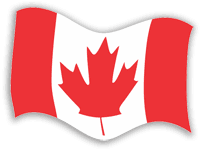|
In the year before World War I began, celebrations abounded
along the Canada-United States border. It was 100 years since
the end of the War of 1812, and orators at great banquets in
both countries hailed the century of peace between Canada and
the U.S. The “undefended border” between the two North American
nations was an example to the world, they all proclaimed. If
only Europeans could act like Americans and Canadians.
If only it had been true.
In fact, Americans and Canadians had been fighting ever since
settlement began. English adventurers from the American colonies
seized Quebec City in the 17th century and French soldiers and
First Nations warriors had attacked English settlements
repeatedly into the 18th century. Even before the Declaration of
Independence created the United States, in 1775 the Continental
Congress had sent an invading army to capture Montreal and to
attempt to seize Quebec. The War of 1812, its end celebrated in
1914’s ceremonies, had closed in a bloody stalemate.
Then came the Rebellions of 1837-38 in the Canadas, followed by
attacks on British Canada by “Patriots” from the United States
who sought to “free” Canada. In 1839, there was the Aroostock
War, a boundary dispute between Maine and New Brunswick that led
both sides to mobilize troops before negotiations cooled
everyone down. During the U.S. Civil War, fear of an American
attack that might bind up the wounds of war with a victorious
drive northwards led the British North American provinces to
join together in the Dominion of Canada. The British colonies
knew they had no chance separately; together they just might
survive against the bigger, richer U.S. The British and their
North Americans colonies also had seemed more sympathetic to the
South than to Abraham Lincoln’s Union, and when Confederate army
raiders struck from Canada across the U.S. border, looted
Vermont banks, and fled back to Montreal, the courts turned them
loose — with their stolen money.
Despite such provocations, the U.S. did not attack, but
Irish-American Fenians, men who hoped to liberate Ireland from
British rule by attacking Canada, did launch repeated attacks
from United States territory against Quebec, Ontario, New
Brunswick and Manitoba, attacks that continued from 1866 to
1871. Most of the raids were more comic opera than war, but at
Ridgeway in Upper Canada in June, 1866, the skirmish was bloody
— and the Fenians defeated a Canadian-British force before
escaping back across the border.
The Fenian raids were the last armed confrontation on the
border, it’s true. But Canada, as a British possession, could
never consider itself safe. Every time the United States and
Great Britain engaged in a diplomatic confrontation, Canadians
shivered in their boots. What if the dispute turned to war? This
was not an unrealistic concern. In 1895, the border between
Venezuela and British Guiana, a South American boundary dispute
a long way from Washington, London and Ottawa, almost started a
conflict between Britain and the United States. For a brief
period, Canada began a small rearmament program, before the
peaceful settlement of the border question let Ottawa sink back
into its normal neglect of defence.
The point is that peace, while desired by almost everyone, was
always threatened. There were hotheads in the U.S. Congress and
in some newspaper offices who believed that all of North America
should be American. It was the United States’ “manifest
destiny,” they said. It wasn’t that Americans disliked
Canadians; it was that Canada was a British colony, and Britain,
the nation against which the Americans had revolted, offended by
its mere presence. For their part, those Canadians who did not
emigrate to the United States — tens of thousands did every
year, seeking greater opportunities — resented the constant
threats from the south and disliked what they saw as bragging,
boasting Yankees who seemed to believe that everything they did
was right and proper.
And yet, during World War I when Canada found itself in serious
economic difficulty, it was forced to ask Washington, just into
the war, for assistance in the summer of 1917. What is
interesting is the way Canada approached the U.S. The finance
minister wrote to his American counterpart to say “We have in
your time and mine always been good neighbours. Occasionally a
verbal brickbat has been thrown across the fence,” Sir Thomas
White wrote. “But we have always sympathized with each other …
In our attitude towards constitutional liberty and all social
problems our people are very much alike and understand each
other better I think than any other two peoples in the world
today.” We are all
North Americans together — that was the message, and White got
the help Canada needed.
It was and is true in 1917 and today. But Canadians should not
pretend that it was always so. The undefended border and the
century of peace after the War of 1812 were myths, not fact.
J.L. Granatstein is editor of The Canadian Experience and writes
on Canada-U.S. relations, foreign and defence policy, and
political history.
Next Instalment: Even ‘Best Friends’ Have Problems
The Canadian Experience is a 52-week
history series designed to tell the story of our country to all
Canadians. Sponsored by Multimedia Nova Corporation and
Diversity Media Services partners, the series features articles
by our country’s foremost historians on a wide range of topics.
Past articles and author bios are available at
http://www.cdnexperience.ca. The Canadian
Experience is copyright ©2010-2011 Multimedia Nova
Corporation. |
List of
published "Canadian Experience" articles |
 #41 The Myth of the Undefended Border
#41 The Myth of the Undefended Border
